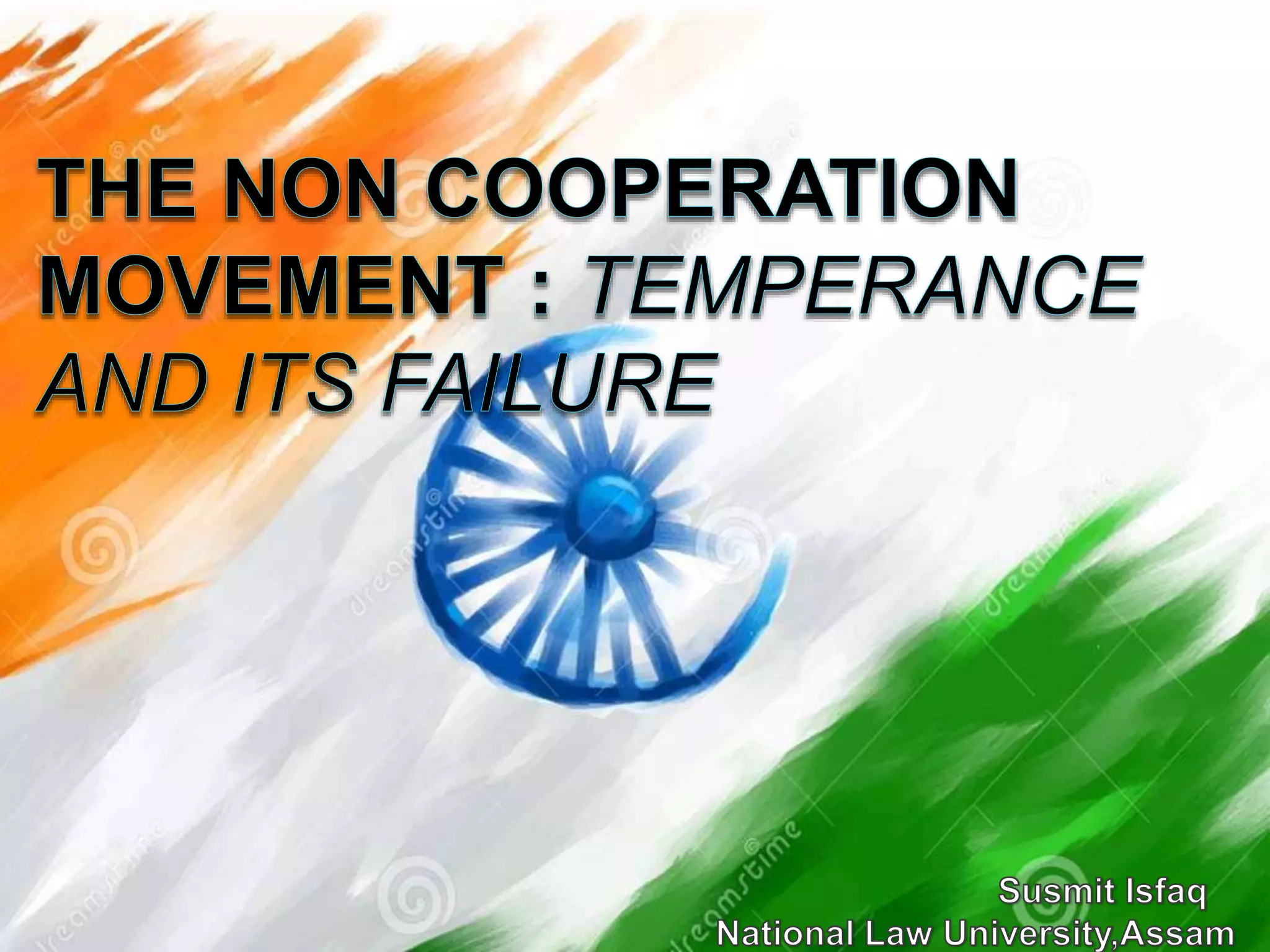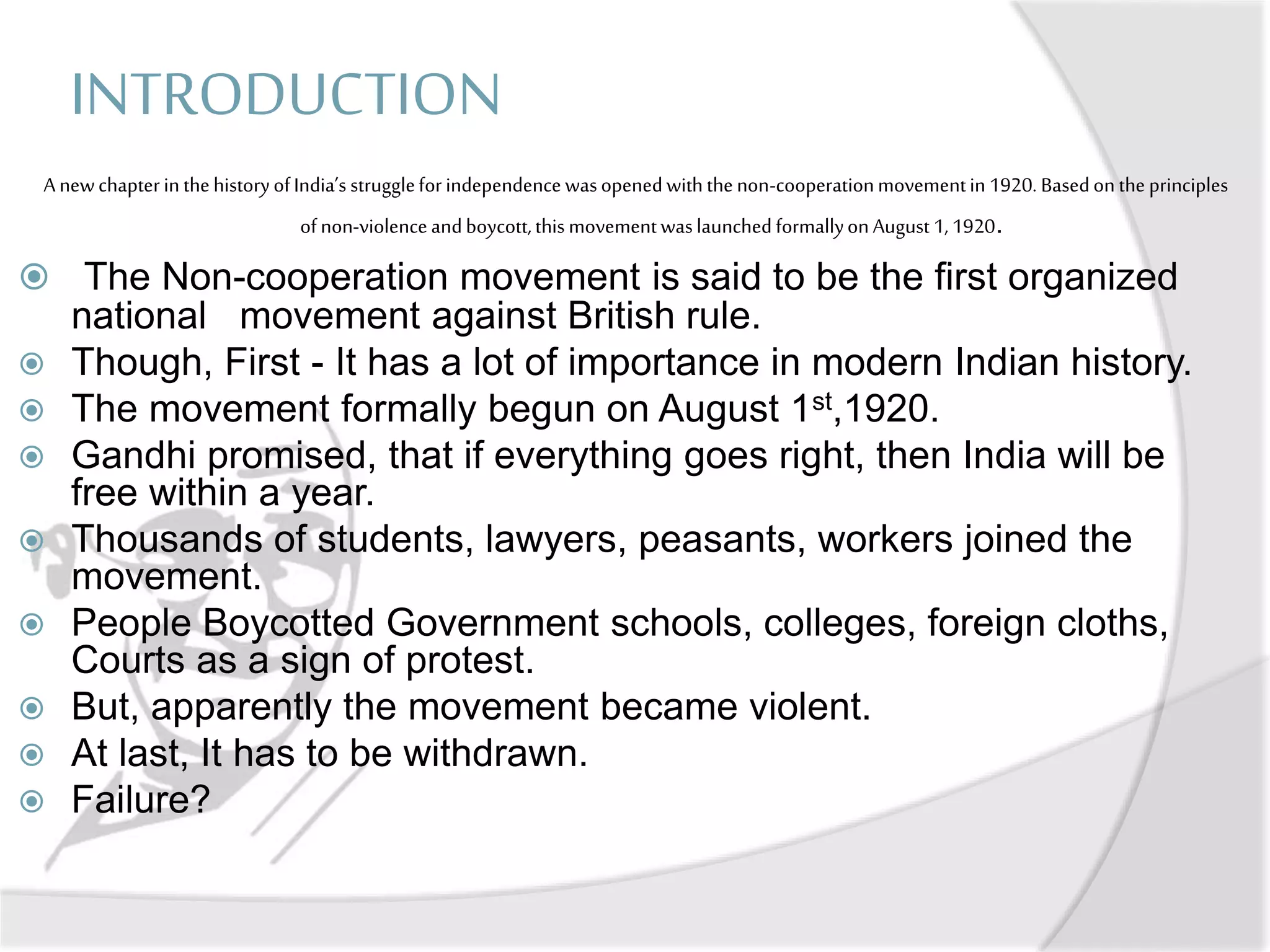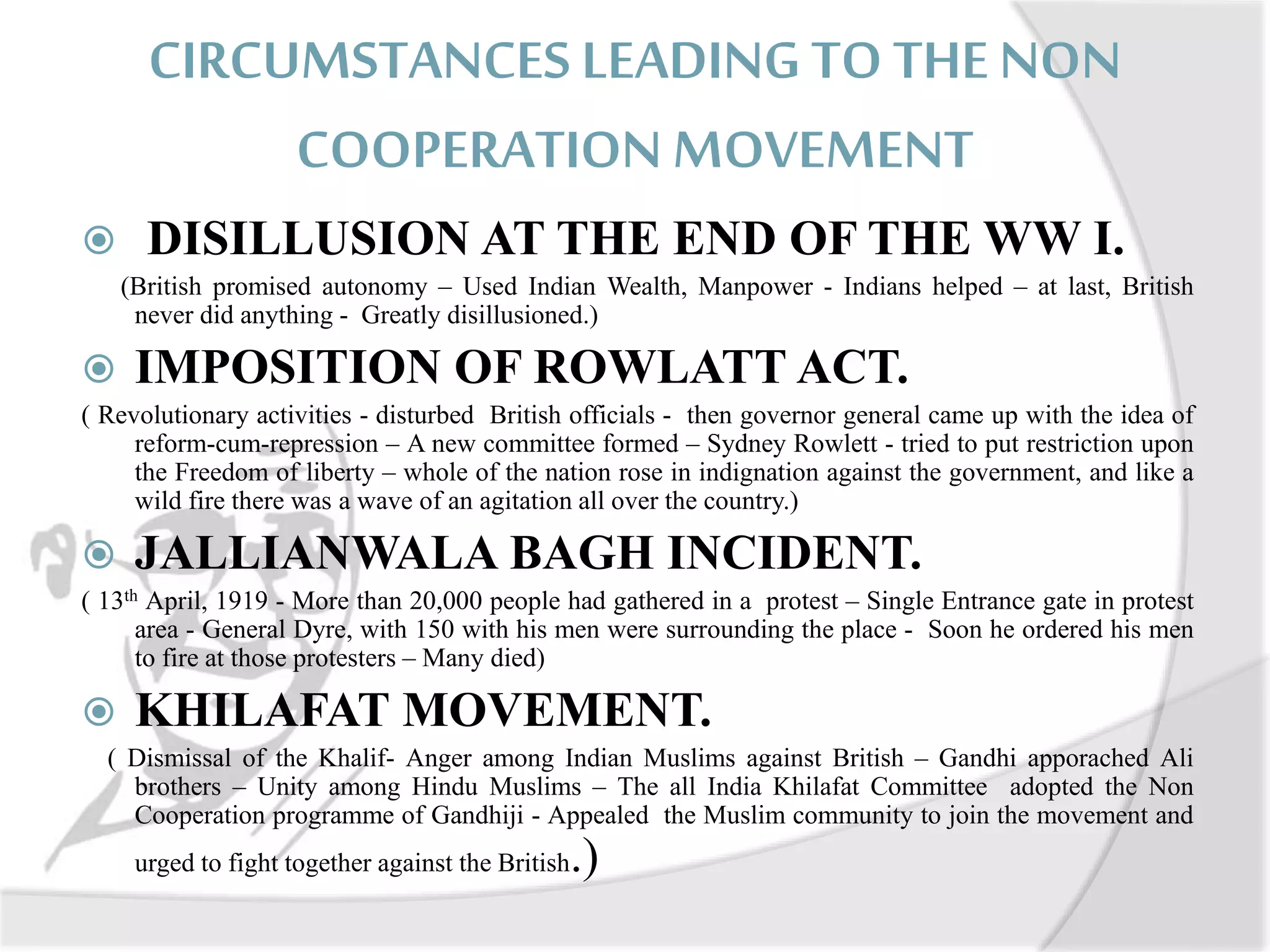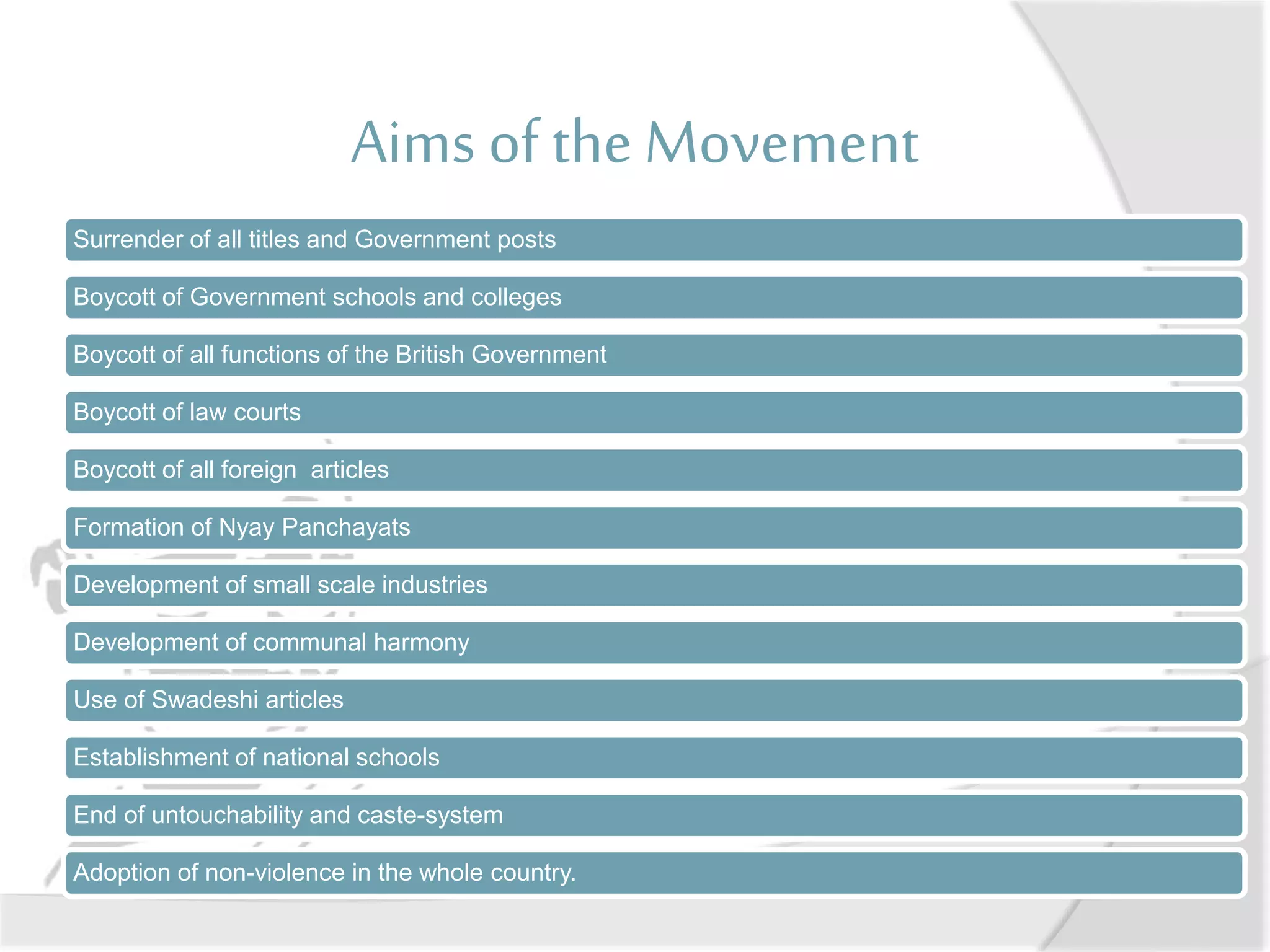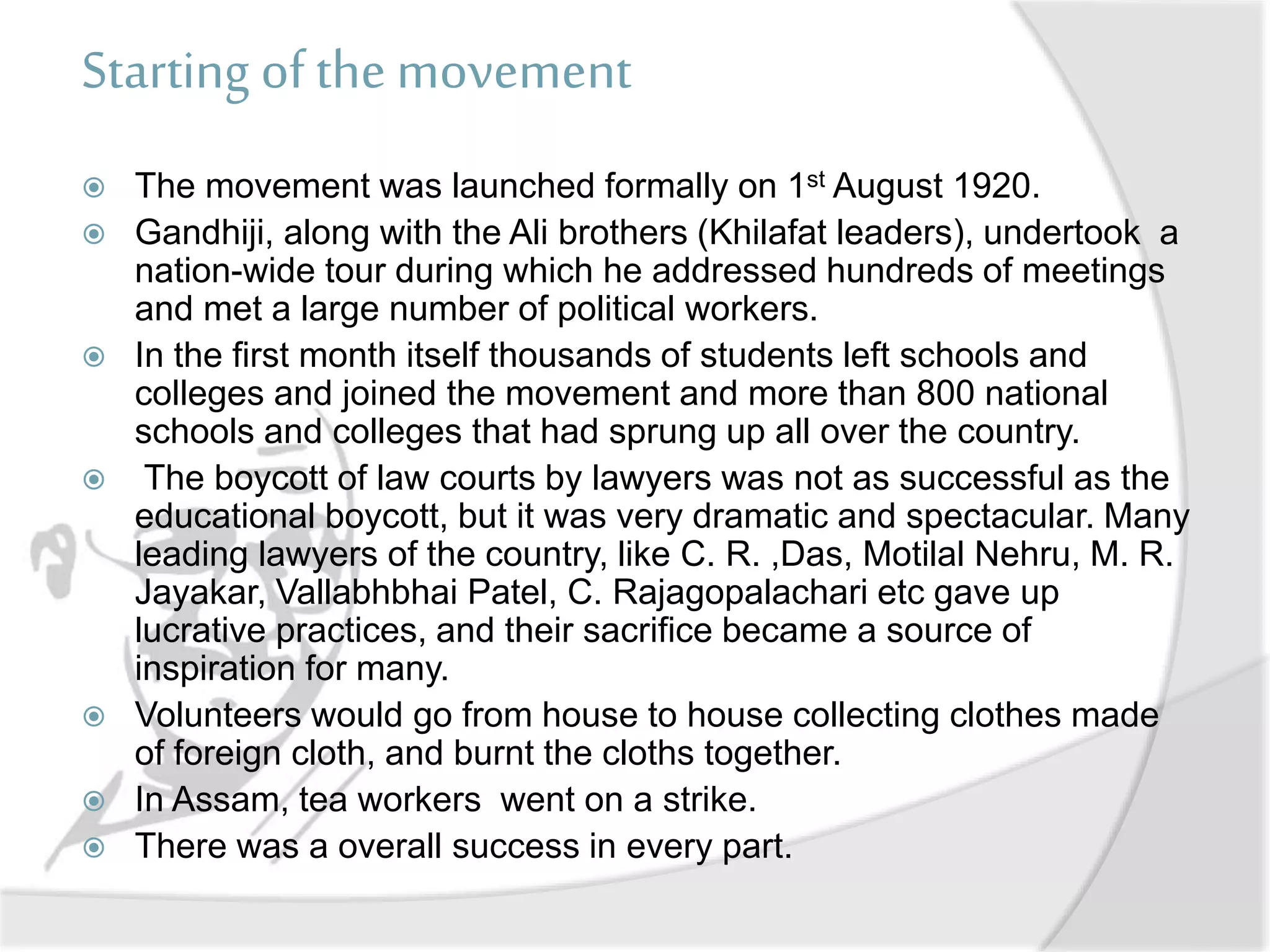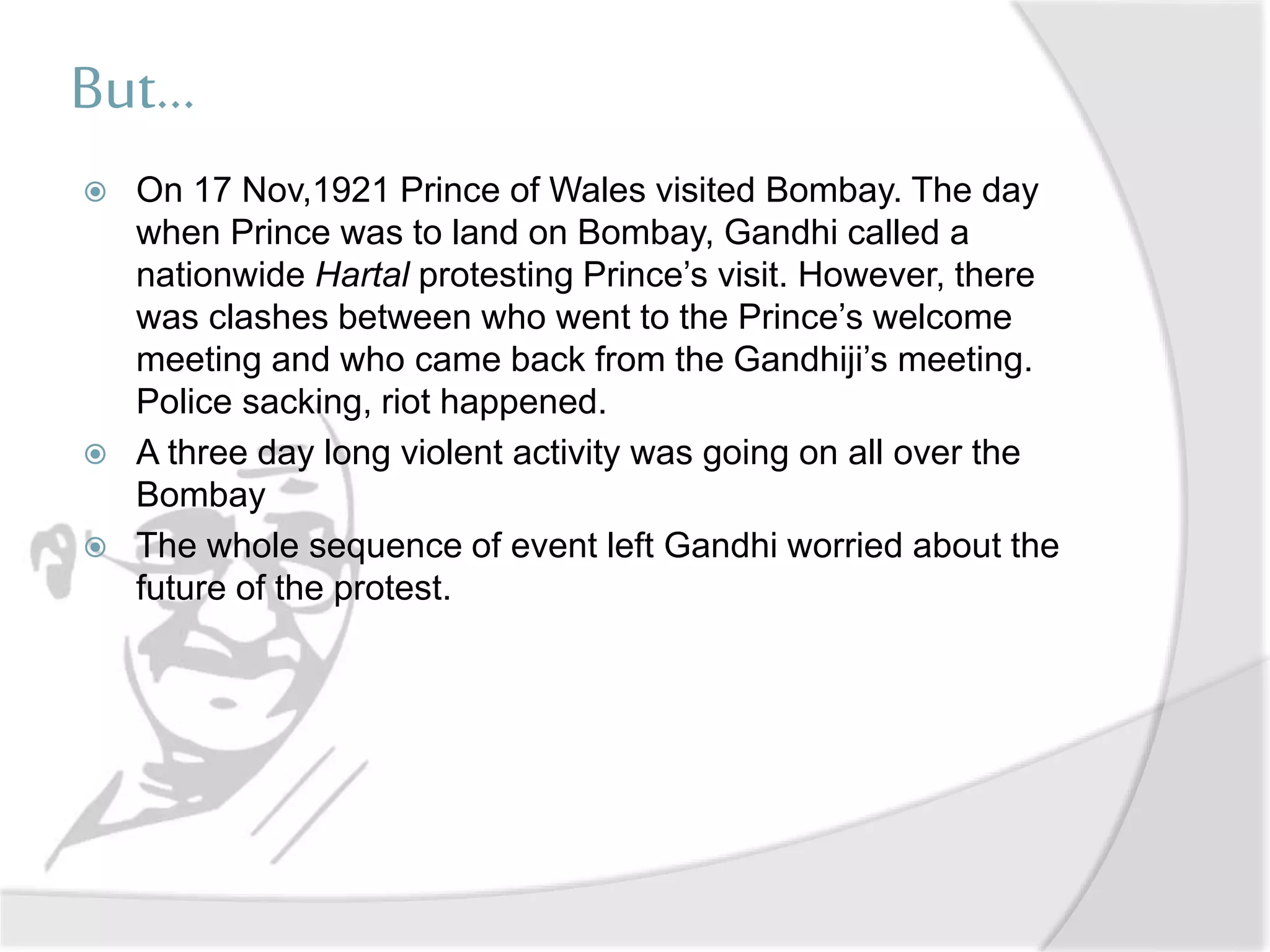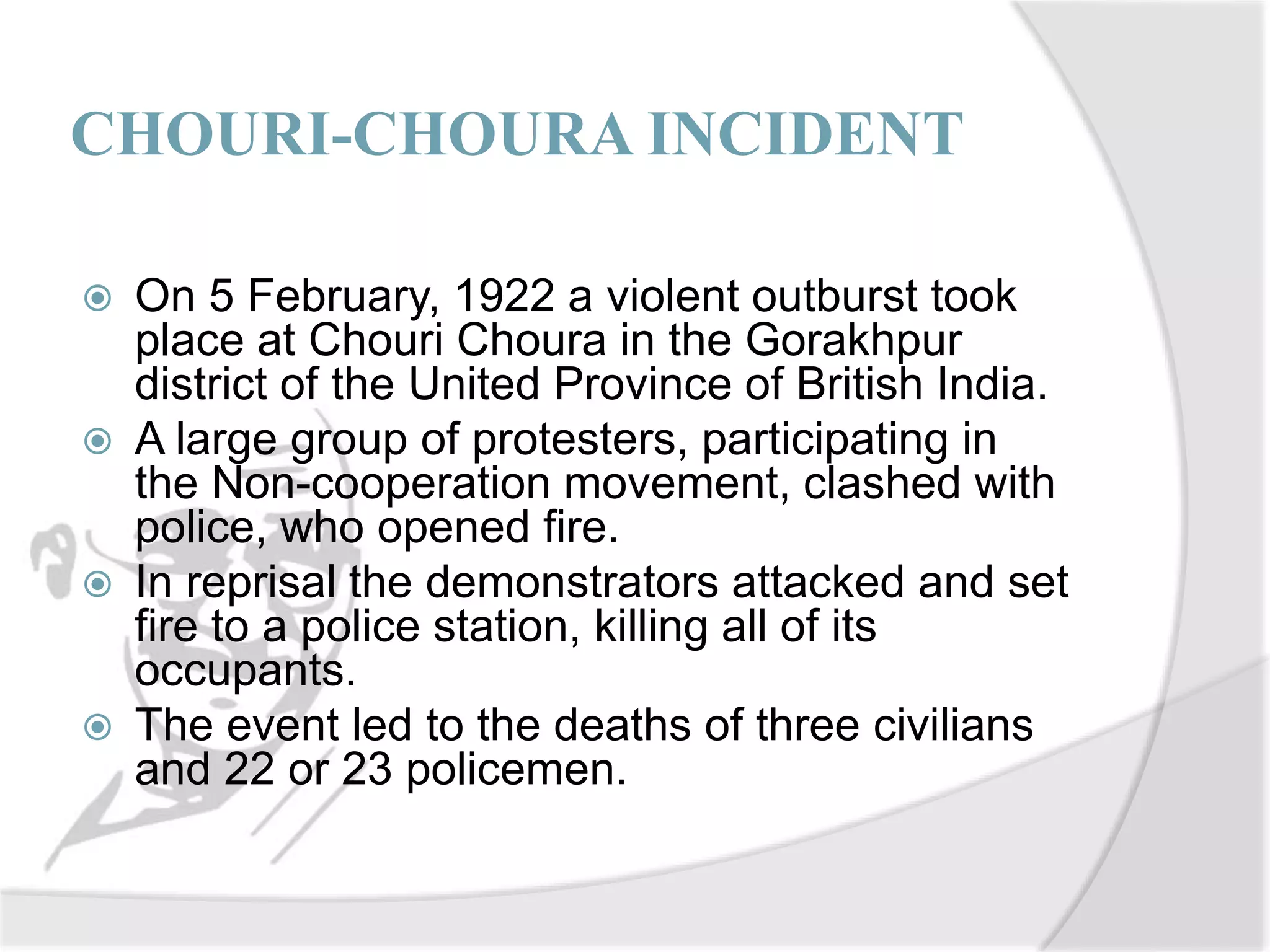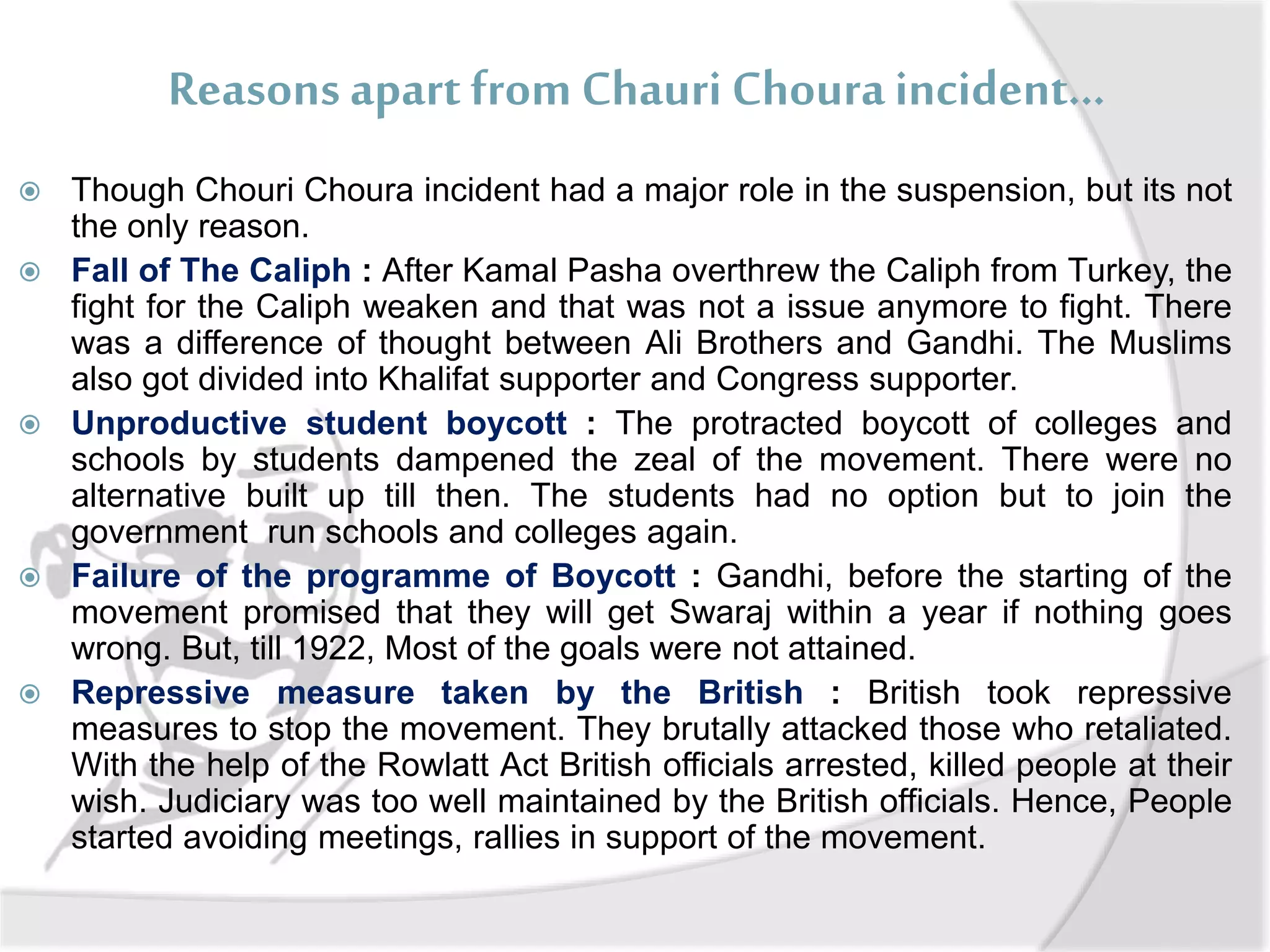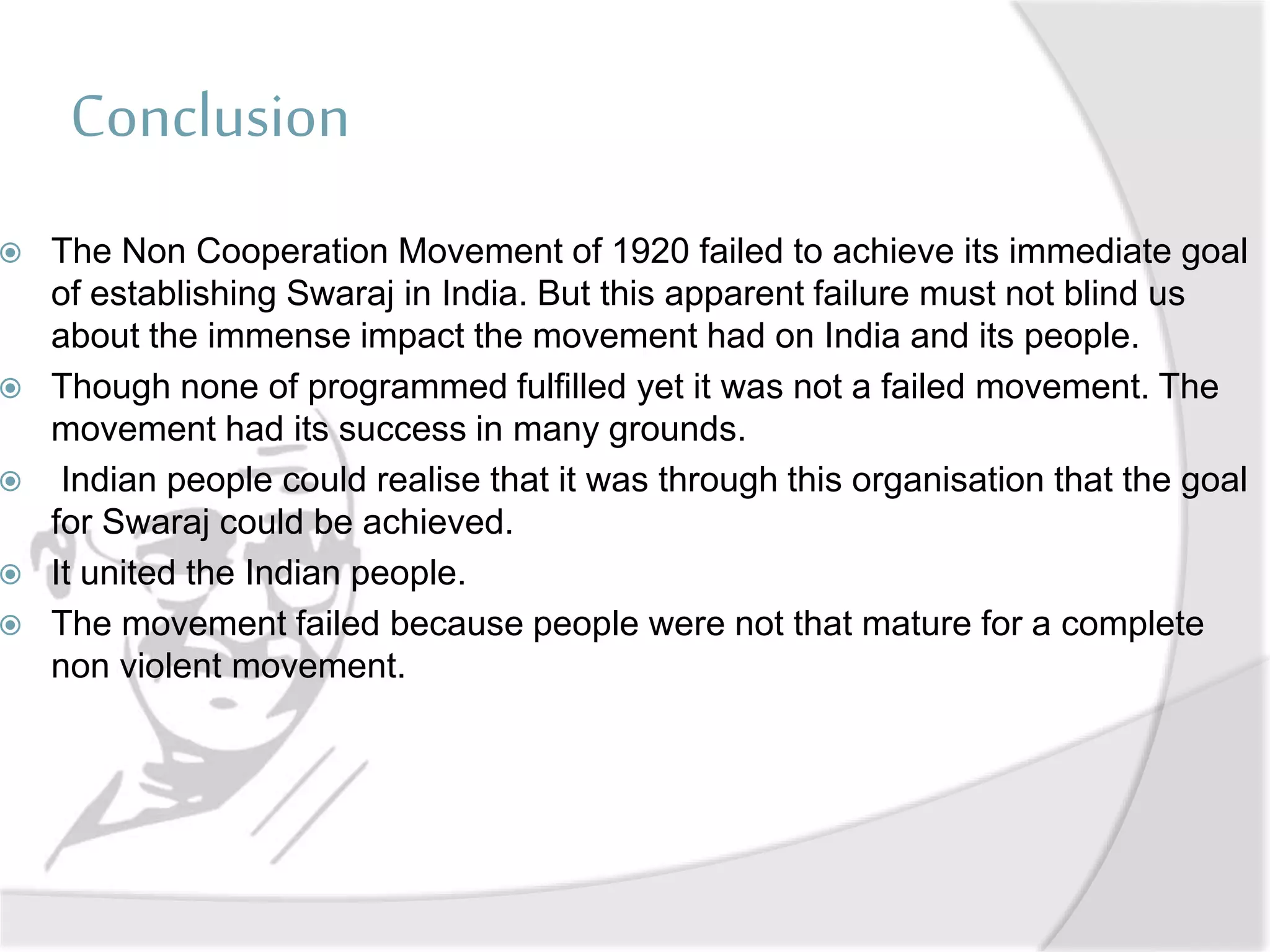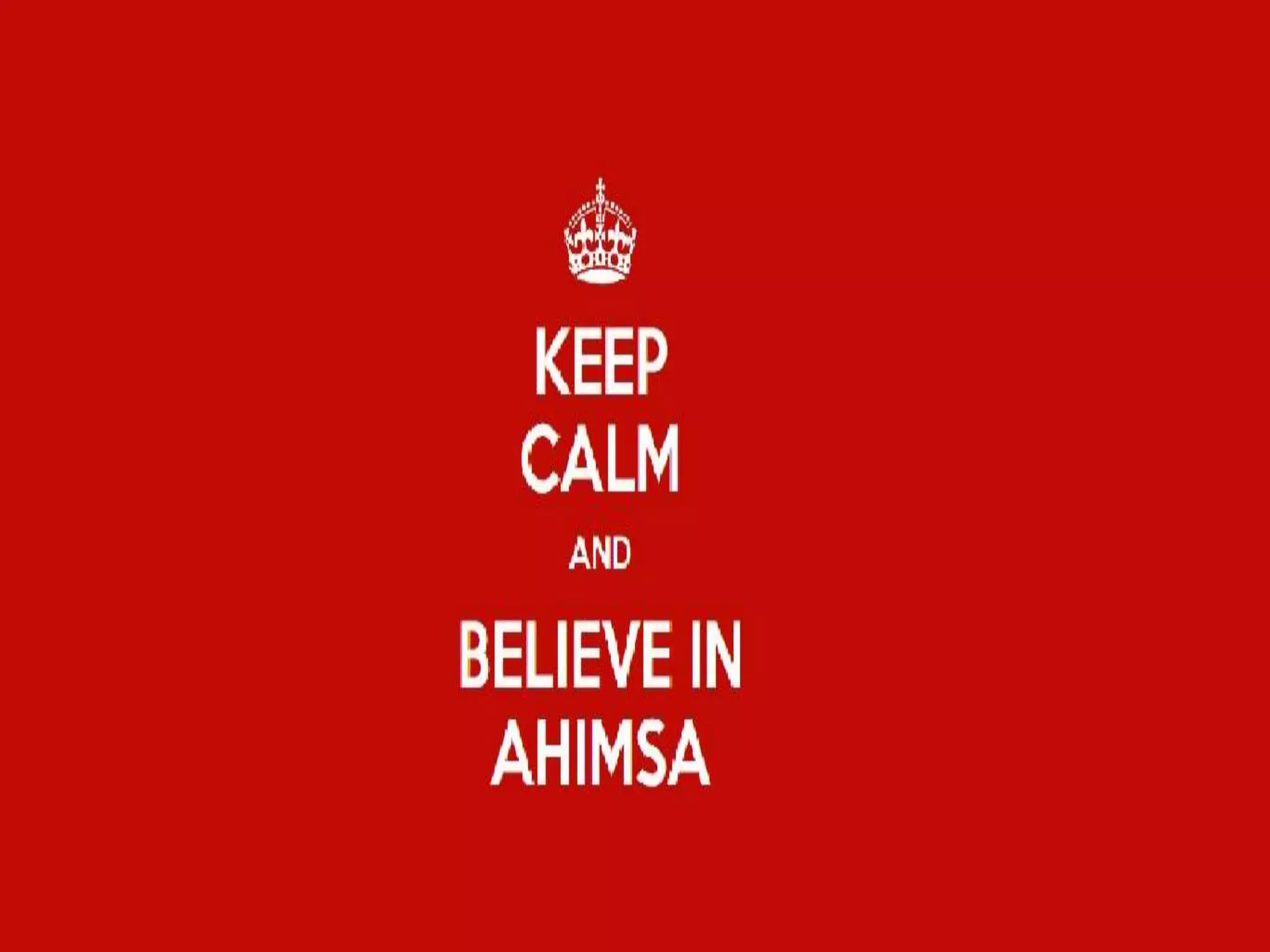The non-cooperation movement was launched in 1920 by Gandhi to protest British rule through nonviolent means like boycotting British institutions and goods. While it initially saw success with many joining, violence broke out in response to police action which caused Gandhi to suspend the movement in 1922. Though its immediate goals were not met, it helped unite Indians and demonstrated the power of nonviolent civil disobedience in the independence struggle.
